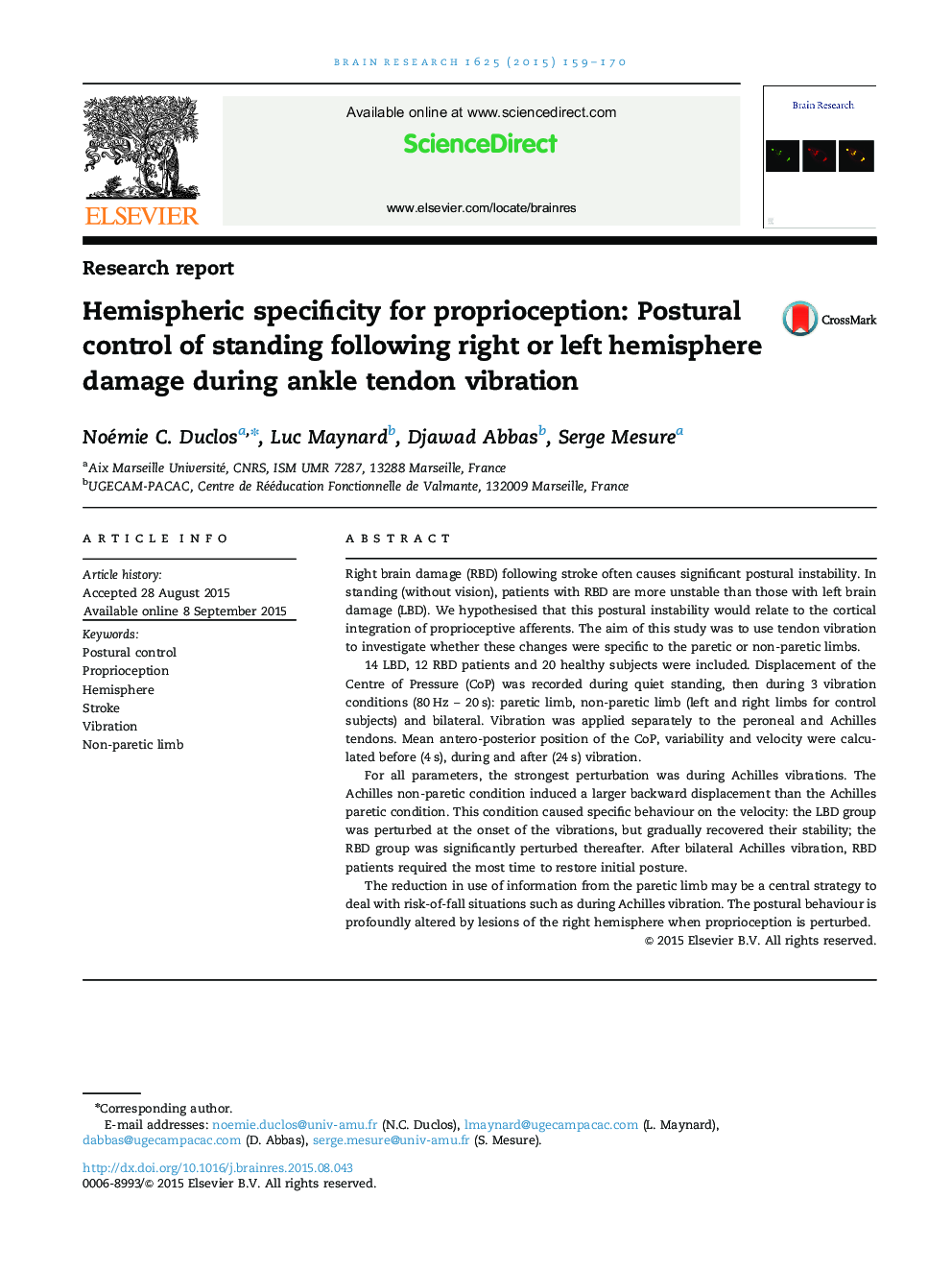| کد مقاله | کد نشریه | سال انتشار | مقاله انگلیسی | نسخه تمام متن |
|---|---|---|---|---|
| 6262844 | 1613814 | 2015 | 12 صفحه PDF | دانلود رایگان |
- Lesions of the right hemisphere reduce postural capacity.
- Lesions of the right hemisphere modify the integration of proprioceptive cues.
- Postural reactions to non-paretic limb perturbation depend on the side of lesion.
- Lesions of the right hemisphere reduce adaptation capacity.
- The weighting of paretic limb information is reduced if there is a risk of fall.
Right brain damage (RBD) following stroke often causes significant postural instability. In standing (without vision), patients with RBD are more unstable than those with left brain damage (LBD). We hypothesised that this postural instability would relate to the cortical integration of proprioceptive afferents. The aim of this study was to use tendon vibration to investigate whether these changes were specific to the paretic or non-paretic limbs.14 LBD, 12 RBD patients and 20 healthy subjects were included. Displacement of the Centre of Pressure (CoP) was recorded during quiet standing, then during 3 vibration conditions (80Â Hz - 20Â s): paretic limb, non-paretic limb (left and right limbs for control subjects) and bilateral. Vibration was applied separately to the peroneal and Achilles tendons. Mean antero-posterior position of the CoP, variability and velocity were calculated before (4Â s), during and after (24Â s) vibration.For all parameters, the strongest perturbation was during Achilles vibrations. The Achilles non-paretic condition induced a larger backward displacement than the Achilles paretic condition. This condition caused specific behaviour on the velocity: the LBD group was perturbed at the onset of the vibrations, but gradually recovered their stability; the RBD group was significantly perturbed thereafter. After bilateral Achilles vibration, RBD patients required the most time to restore initial posture.The reduction in use of information from the paretic limb may be a central strategy to deal with risk-of-fall situations such as during Achilles vibration. The postural behaviour is profoundly altered by lesions of the right hemisphere when proprioception is perturbed.
Journal: Brain Research - Volume 1625, 2 November 2015, Pages 159-170
